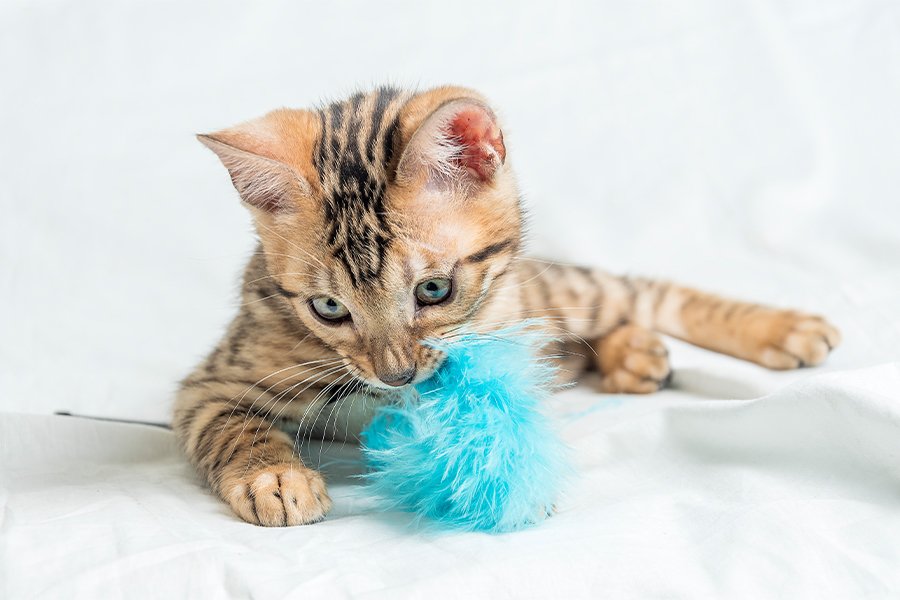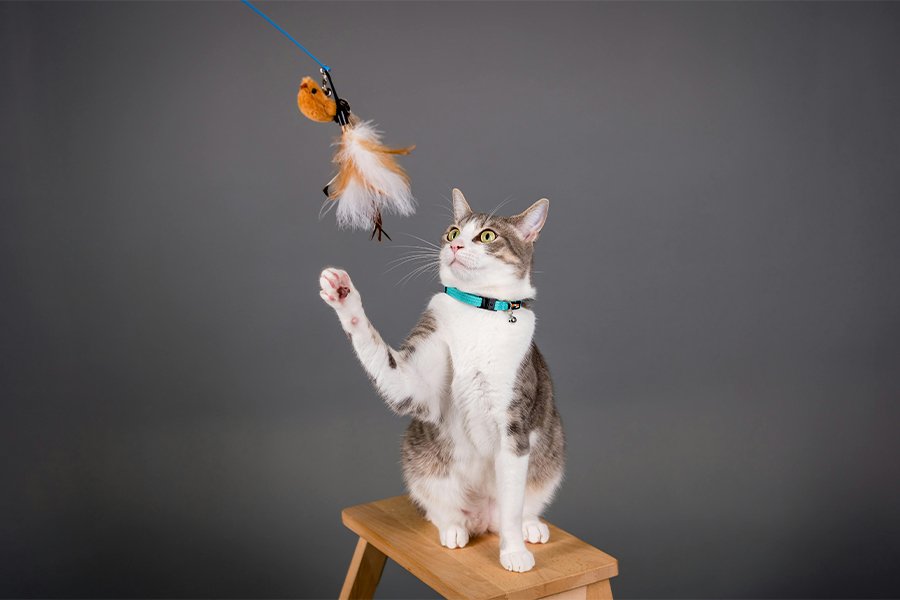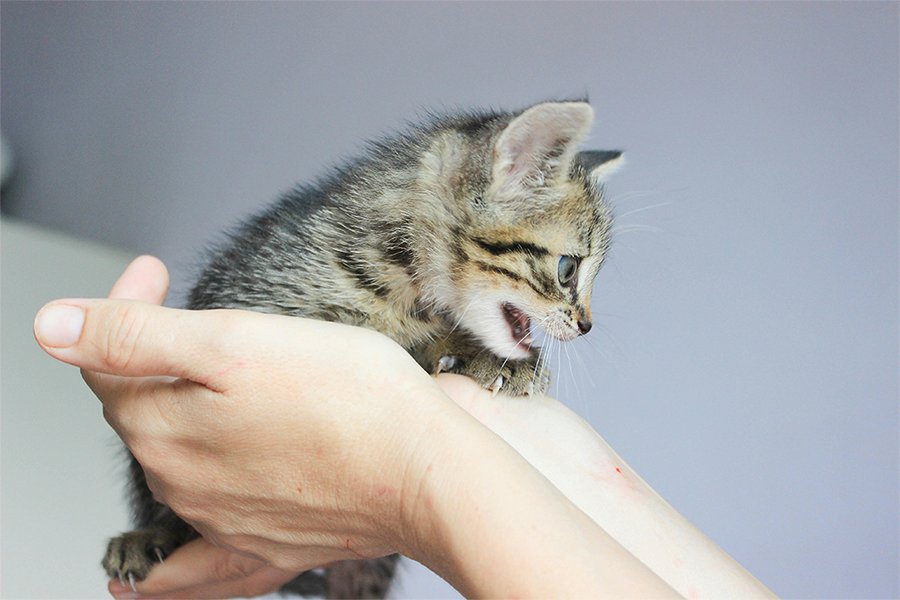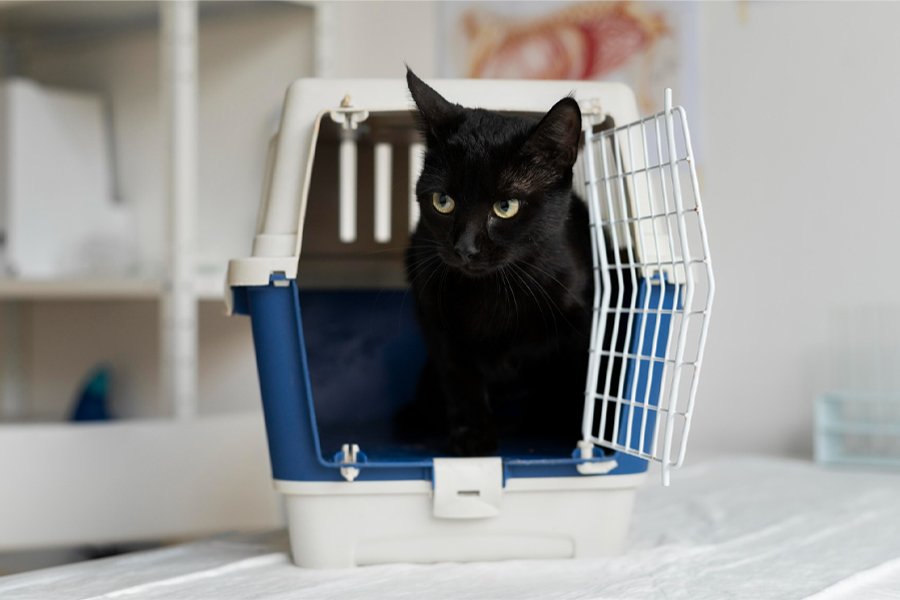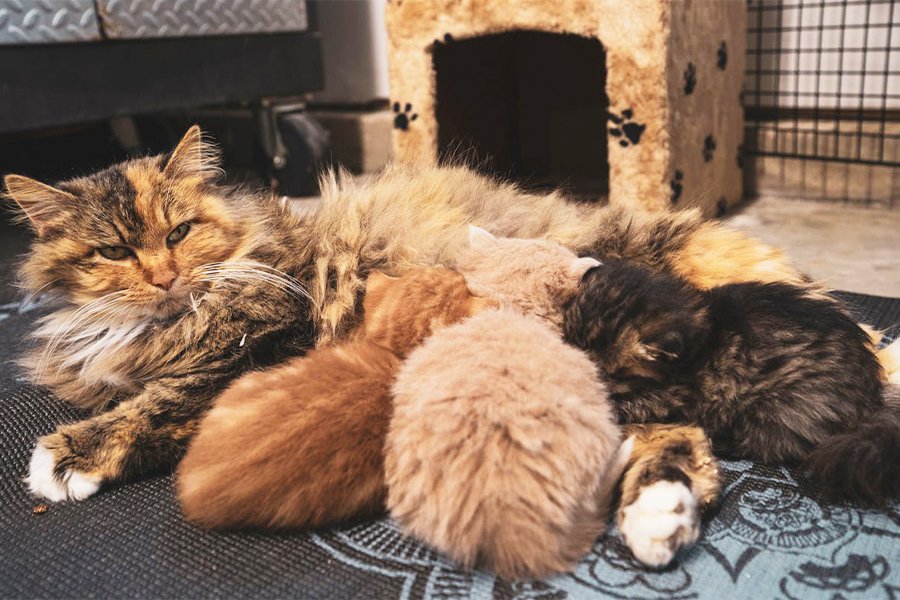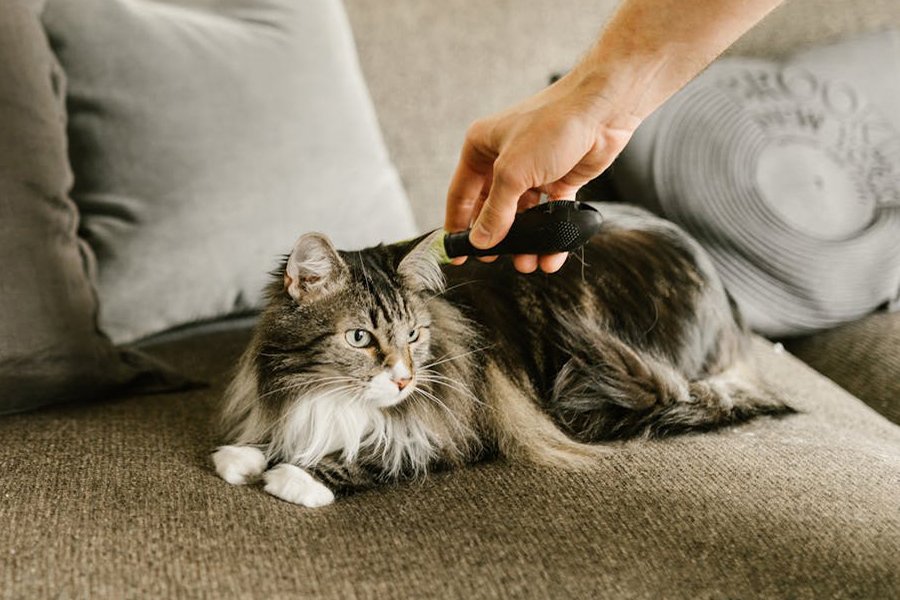How to Train a Cat Not to Bite
Cats are loving companions, but biting is one of the most confusing habits for pet owners. Some cats give soft “love bites” while playing or showing affection, while others bite suddenly and hard. Many owners wonder how to train a cat not to bite. To handle this correctly, we first need to understand why cats bite and then follow simple steps to correct the behavior.
Understanding Why Cats Bite?
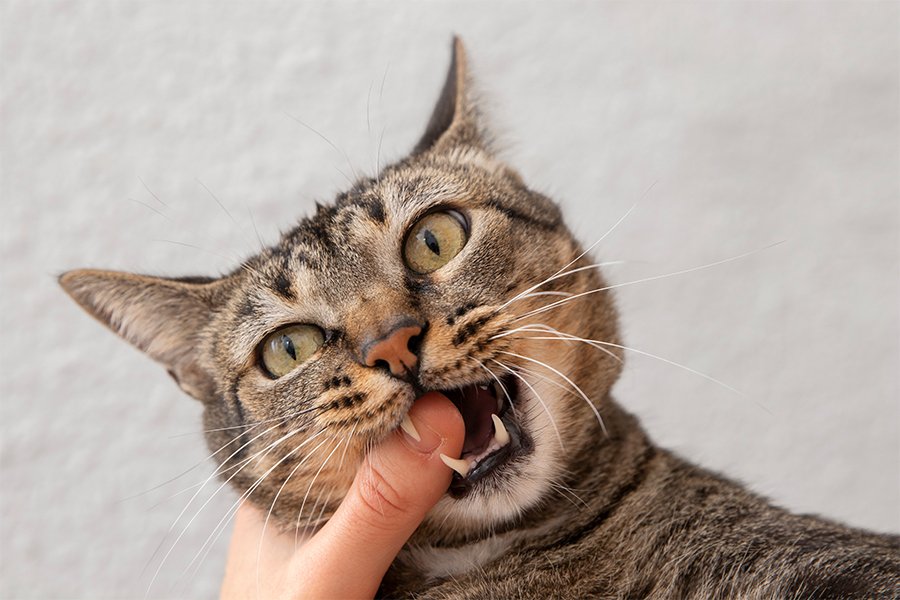
To train a cat not to bite, it is essential to understand why cats bite in the first place. Biting is not random—it’s a form of communication or instinct. Cats may bite for several reasons, and knowing the difference helps you choose the right response. Instead of seeing it negatively when a cat bites, we need to understand why cats bite.
“Understanding a cat’s instincts is the first step to guiding their behavior. Biting isn’t mischief — it’s communication,” says Jackson Galaxy, Cat Behaviorist & TV Host of My Cat From Hell
Playfulness in kittens
Kittens often start biting during playtime between eight and twelve weeks of age. In nature, they play-fight with their littermates by grabbing, scratching, and gently biting. These playful battles help them learn hunting skills and social boundaries.
When raised indoors, kittens usually direct this same playful energy toward their owners. If you allow a kitten to play with your hands, it will soon treat them like toys. Over time, this behavior becomes stronger. That is why many cat owners later search for how to train a cat not to bite. The key is to use interactive toys instead of hands during play.
Anxiety and Nervous Behavior in Cats
Cats are very sensitive animals. They can bite when they feel scared, nervous, or uncomfortable. Loud noises, rough handling, or meeting strangers can make them bite out of fear. Even things like cutting nails or too much petting can cause stress.
If your cat suddenly bites after being calm, it may be because something is hurting or scaring them. Some cats with pain or joint problems bite when touched in the wrong place. Always be gentle and give your cat space when needed. This helps them feel safe and calm.
Feeling annoyed when a cat bites
Cats also bite when they feel angry or upset. If they see a bird outside but cannot reach it, or if playtime ends too soon, they can get frustrated. Cats show this through their body language—tail flicking, wide eyes, and stiff posture.
When this happens, give them more time to play and move. Use toys like balls or feather sticks to help them release energy. A happy and active cat is less likely to bite out of frustration.
Biting is a natural hunting behavior in cats
Even house cats have strong hunting instincts. If they do not have toys or play activities, they may chase and bite your hands or feet. Many new owners searching for how to train a cat not to bite are really trying to control this natural hunting behavior.
If your cat bites when you walk by, it may be acting like a hunter. Try to redirect that energy. Play with toys that move, like wand toys or rolling balls. Reward your cat when it stays calm. This teaches them what is right and wrong.
How to Respond When Your Cat Bites: Train Your Cat to Stop Biting
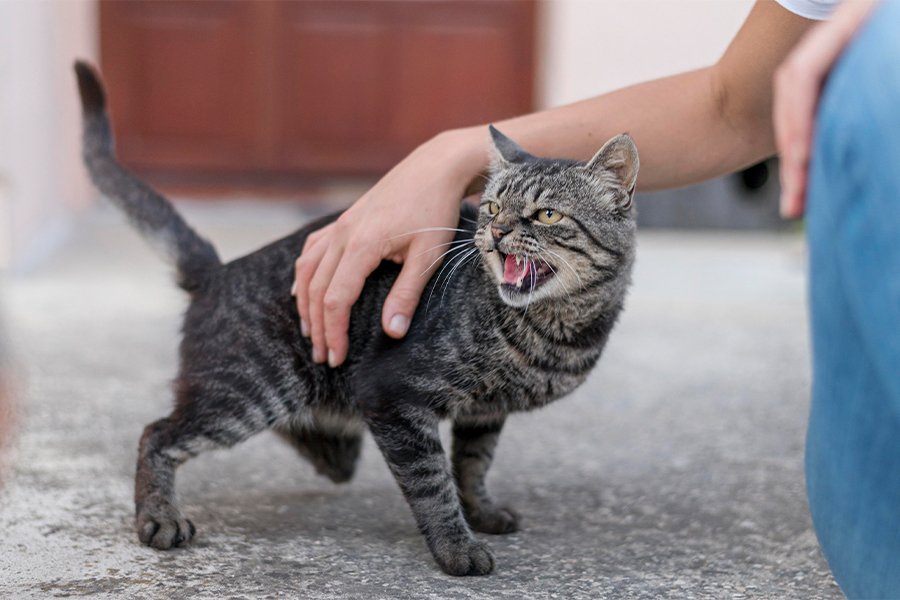
When a cat bites, your immediate reaction can decide whether the behavior becomes worse or slowly fades away. Many new cat parents panic, pull their hands away, or even scold their pets. But if you truly want to learn how to train a cat not to bite, it is important to understand that calm and consistent responses always work better than punishment.
The initial step is to stay calm and refrain from quick movements.. Pulling your hand away too quickly makes it look like prey, which can trigger your cat’s natural hunting instinct. Instead, let your hand go limp and stay still. Most cats lose interest when the “prey” no longer moves, and this can prevent playful bites from turning into deeper scratches.
Once your cat has released its grip, it is important to redirect the behavior. Keep a few safe toys nearby, such as feather wands or kick pillows, so you can guide your cat toward an appropriate outlet. Over time, they will begin to understand that toys are acceptable for biting, but human hands are not. This technique is one of the most reliable answers to how to train a cat to stop biting.
Positive Reinforcement: The Key to How to Train a Cat Not to Bite
At the same time, avoid physical punishment at all costs. Swatting, spraying water, or shouting will only create fear and break trust. Cats do not connect punishment with their own actions the way humans expect. Instead, they learn to fear the person who delivers the punishment. If your goal is to teach a cat not to bite, you must replace punishment with positive reinforcement. Proper training is also part of how to take care of a kitty, ensuring your cat feels safe and loved.
Another useful strategy is learning to recognize your cat’s warning signs. Flattened ears, twitching tails, and sudden body tension often appear just before a bite. By stopping play or petting sessions at that moment, you can prevent many unwanted bites. Reading body language is one of the most valuable skills a cat parent can develop.
When your cat chooses calm behavior—such as walking away, stopping a bite quickly, or engaging with a toy—reward them with gentle praise or a treat. Positive reinforcement makes it clear which actions are acceptable. Over time, this builds trust and helps reduce unwanted biting habits.
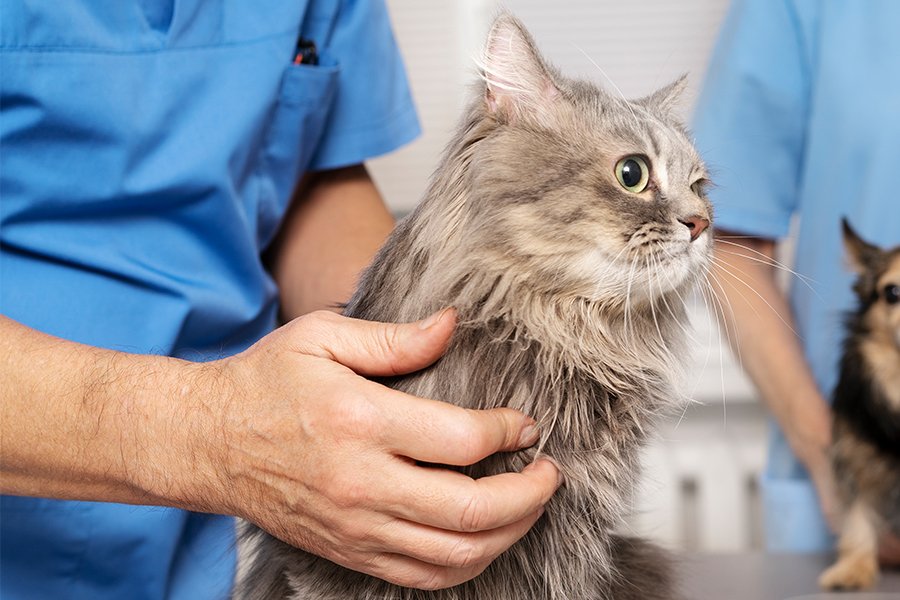
Finally, never ignore the possibility of a medical reason behind sudden biting. If your previously gentle cat begins to bite without warning, a veterinary check-up is essential. Dental pain, arthritis, or hidden injuries can all cause defensive biting. In such cases, the real answer to why my cat bites so hard may be linked to discomfort rather than behavior problems.
By responding calmly, guiding your cat to the right outlets, and reinforcing positive habits, you create a safe environment where biting becomes less common. This patient approach not only teaches your cat better manners but also strengthens the bond between you.
Preventing Cat Biting Through Training and Enrichment
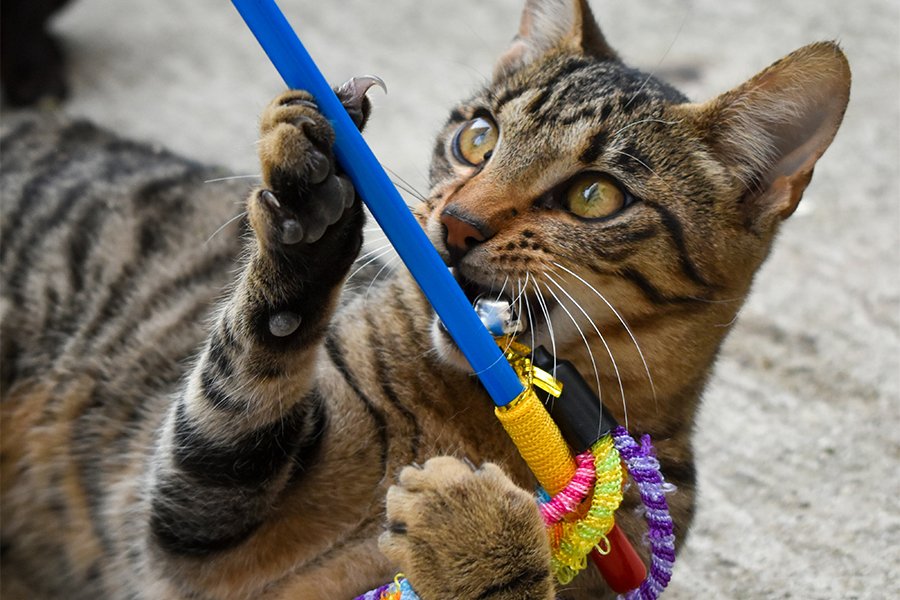
The most effective way to stop biting is not only to react correctly but also to prevent the behavior before it starts. Prevention is the foundation of how to train a cat not to bite, and it usually depends on creating a safe, engaging, and stress-free environment. Cats who have enough stimulation, comfort, and trust are far less likely to lash out with their teeth.
Structured Play Sessions to Prevent Biting
Play is one of the most important tools for prevention. Kittens and young cats especially need structured play sessions to release energy and practice their natural hunting instincts. Using interactive cat toys like feather wands, laser pointers, and interactive puzzles gives them a safe outlet. This method not only redirects playful aggression but also strengthens your bond. When owners wonder how to train their kitten not to bite, the answer often lies in making sure the kitten has enough playtime with toys instead of human hands.
Recommended Products
4.0 (17,545) Based on Amazon Reviews
4.7 (2,563) Based on Amazon Reviews
4.5 (6,289) Based on Amazon Reviews
Socializing is a method to teach a cat not to bite.
Socialization is another important factor. Cats that grow up without positive human interaction may be more prone to fear-based biting. Carefully handling, grooming, and gently introducing kittens to a variety of family experiences early in life can help them grow into confident adults. Even older cats can thrive with slow, patient socialization. The more comfortable your cat feels, the less likely they are to bite out of fear or stress.
Clicker Training for Improved Behavior
Training is not just limited to dogs—cats can benefit from clear, consistent instruction, too. For example, clicker training is a great way to encourage good behavior. By pairing words with rewards, you can teach your cat to respond positively to commands and interactions. Many experts recommend clicker training when cat owners ask how to train their cat to stop biting, as it allows the cat to replace negative behaviors with rewarding behaviors.
Stopping Cats from Biting through Environmental Enrichment
Environmental enrichment also plays a big role. Cats need scratching posts, climbing trees, window perches, and comfortable hiding places. Without these, frustration builds and can lead to aggressive behavior. A cat that can watch birds outside the window, climb perches, and retreat to a quiet corner feels more secure and is less likely to bite out of boredom or stress.
Finally, consistency is the key to success. Everyone in the household must follow the same rules. If one person allows rough play with hands while another discourages it, the cat will become confused, and the biting will continue. Training only works when all family members support the same approach. By setting boundaries and reinforcing them daily, you give your cat the structure they needs to learn better habits.
Preventing biting is not about controlling your cat but about healthily meeting their needs. When cats have proper outlets for energy, feel safe in their environment, and receive positive guidance, they naturally develop better behavior. This proactive method ensures that questions like how to teach a cat not to bite become less of a problem in the long run.
Building Trust and a Strong Bond With Your Cat
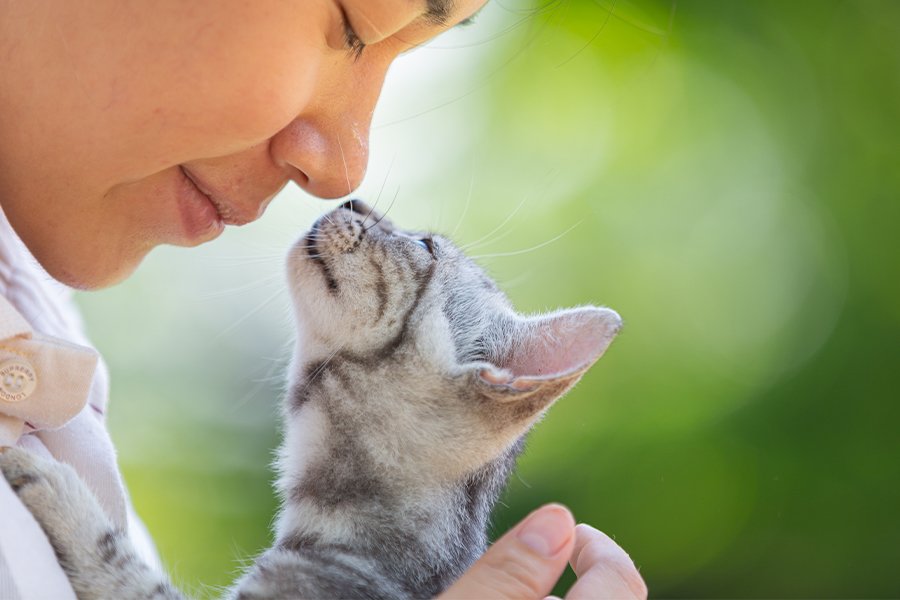
At the end of the day, the best solution to biting is not just training—it is trust. Cats are intelligent, sensitive animals who respond to consistency, kindness, and respect. To master how to train a cat not to bite, you must also focus on building a relationship where your cat feels safe and understood.
A daily routine is essential training to stop biting.
One of the most effective ways to strengthen trust is through daily routines. Cats thrive on predictability. Feeding them at the same time each day, scheduling regular play sessions, and offering quiet bonding moments help them feel secure. A secure cat is far less likely to use biting as a form of communication. Providing high-quality nutrition also supports better behavior and reduces stress.
Encouraging positive behavior
Positive reinforcement should always be your guiding principle. Each time your cat makes a good choice—whether it’s playing with a toy instead of your hand, or calmly walking away instead of biting—reward them. Treats, gentle petting, or verbal praise go a long way in reinforcing positive habits. Over time, your cat begins to associate good behavior with positive outcomes. This is the essence of how to train a cat to stop biting healthily and sustainably.
Understanding Your Cat’s Comfort Zones
Bonding also means respecting boundaries. Cats are independent creatures, and forcing them into interactions they do not want can quickly lead to defensive bites. Learning your cat’s preferences, such as favorite petting spots or preferred resting areas, shows them that you respect their comfort. The more your cat feels in control of their environment, the less likely they are to feel threatened and resort to biting.
Play Everyday
Play together every day, but make sure the play is structured. Use toys that mimic prey, such as feather wands or toy mice, to engage their natural hunting instincts. End each play session on a positive note, followed by a small treat. This not only channels their energy but also creates happy memories associated with you. Many cat behaviorists recommend this approach when owners ask how to teach a cat not to bite, because it combines training with bonding.
Include Health Care in Your Cat
Do not forget about health care as part of your bond. Importance of regular vet visits, cat grooming tips and tools, and dental care ensure your cat is physically comfortable. Pain and discomfort are common reasons behind sudden biting, so taking care of these aspects shows your cat that you are a source of comfort, not stress. If you’ve ever wondered why your cat bites so hard, sometimes the answer lies in untreated medical conditions.
Finally, patience is the greatest tool you can have. Training takes time, and every cat learns at a different pace. Some kittens stop biting after a few weeks of consistent guidance, while adult cats with established habits may need months of steady reinforcement. The important thing is to remain calm, patient, and committed. Cats do not change overnight, but with love and effort, they always improve.
When you combine trust, training, and enrichment, biting slowly fades away, and what remains is a stronger, healthier bond. Your cat learns that you are not a rival or prey but a trusted companion. In the long run, how to train your kitten not to bite is not only about stopping a behavior—it is about building a lifelong friendship filled with love, respect, and understanding.

WRITTEN BY
Md Hazrat Ali
A passionate pet blogger
and SEO content writer

